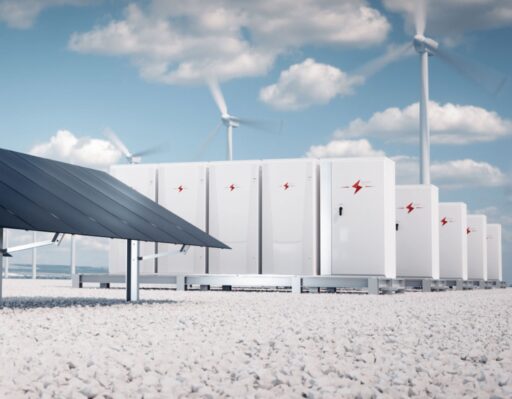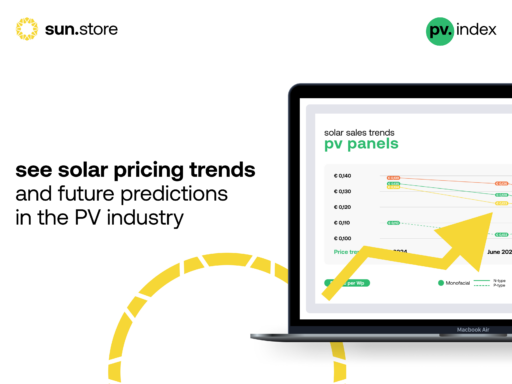Dyness overtakes Huawei as residential battery prices decline across Europe
sun.store releases the October 2025 edition of its Battery Index – the monthly benchmark tracking pricing and brand trends in Europe’s rapidly evolving energy storage market. After a month of relative stability, October data reveal renewed downward pressure on prices across both premium and performance segments, alongside a significant reshuffling in brand rankings.
Residential segment (up to 20 kWh): prices fall again as Dyness climbs to No. 1
The European residential battery market experienced a clear price correction in October. Average prices for premium brands declined by 4%, reaching €287.9/kWh, while performance brands fell by 5% to €147.5/kWh. This synchronized drop reflects the combined effect of easing component costs, increased competition among mid-tier suppliers, and a surge in product listings on the sun.store platform, up by more than one-third month-on-month.
While Huawei had firmly held the top position for the past four months, October brought a notable shift in the residential battery ranking. Dyness returned to the No. 1 spot for the first time since May 2025, driven by a sharp price drop and strong sales momentum across performance-oriented models. The brand’s competitive pricing strategy and wide availability allowed it to outpace Huawei in total GMV despite overall market softness.
Huawei moved down to second place, maintaining flat pricing on its LUNA series but losing share to lower-cost alternatives. Deye slipped to third, reflecting steady but less aggressive activity in the mid-range segment. Pylontech and Sungrow retained their positions in fourth and fifth place respectively, both continuing to benefit from consistent demand and solid distribution coverage.
Overall, October’s reshuffle highlights a market where installers are increasingly optimizing for value, seeking proven quality but with closer attention to system cost and channel support.
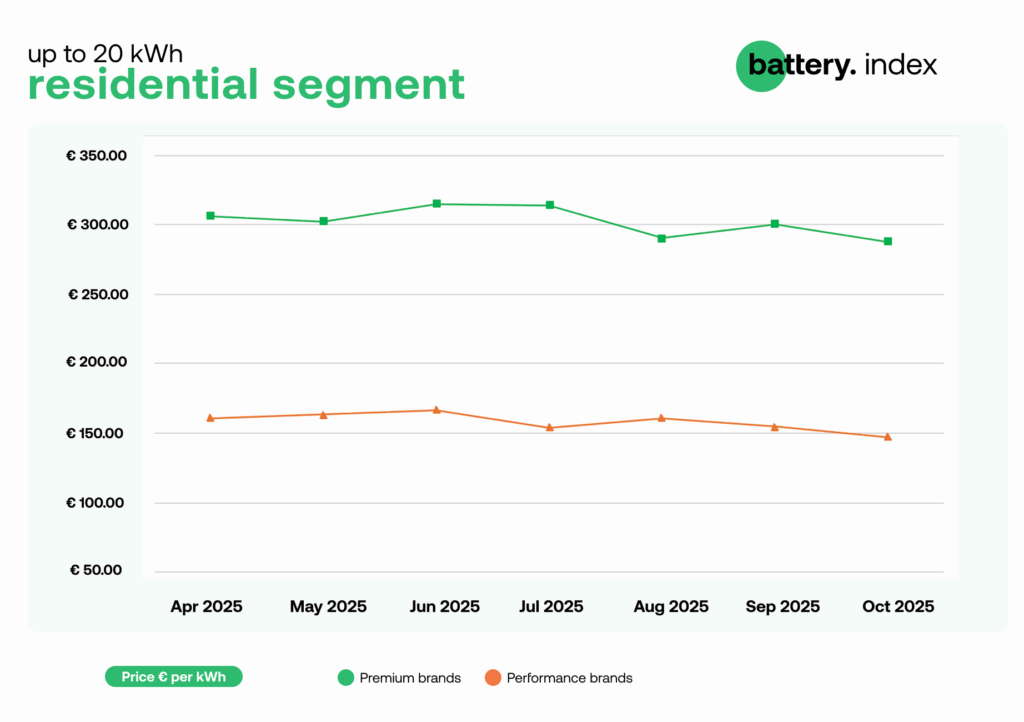
Top 5 battery brands: October 2025

“October marks a meaningful shift in the residential storage landscape,” notes Grzegorz Furman. International Senior PV Trader at sun.store.
“The 4–5% decline across both premium and performance tiers indicates that price competition has returned. Dyness’s rise above Huawei shows how value-driven purchasing is shaping the market – not because of weakened demand, but because buyers are optimizing for cost-efficiency heading into winter.”
The widening gap between premium and performance batteries now exceeds 95%, confirming a structural duality in the market — premium buyers continue to prioritize brand reputation and integration, while cost-focused installers increasingly turn to performance-oriented alternatives.
Commercial segment (20-120 kWh): strong supply meets softer pricing
The commercial storage segment followed a similar trajectory, showing slight but consistent price decreases across both capacity tiers.
Systems in the 20–30 kWh range averaged €227/kWh, down 7% month-on-month from €244/kWh, marking the steepest decline since spring. The drop reflects increased competition among small commercial system suppliers and intensified discounting in preparation for Q4 tenders.
Larger 60–120 kWh systems recorded only a 1% decrease, now at €231/kWh, underscoring the relative stability of large-scale C&I projects, which tend to operate on longer procurement cycles.

Most offered products – October 2025
20–30 kWh segment
- BYD Battery-Box Premium HVM 22.1
- PylonTech Force H3/409.6
- SolarEdge Home Battery 48V 23 kW
- Felicity LUX-X-48100LG01 4
- Dyness Tower Pro TP23
The smaller commercial range continues to attract a mix of established premium players and new challengers. BYD and SolarEdge retain strong presence, while Felicity and Dyness expand their offering with more price-competitive alternatives.
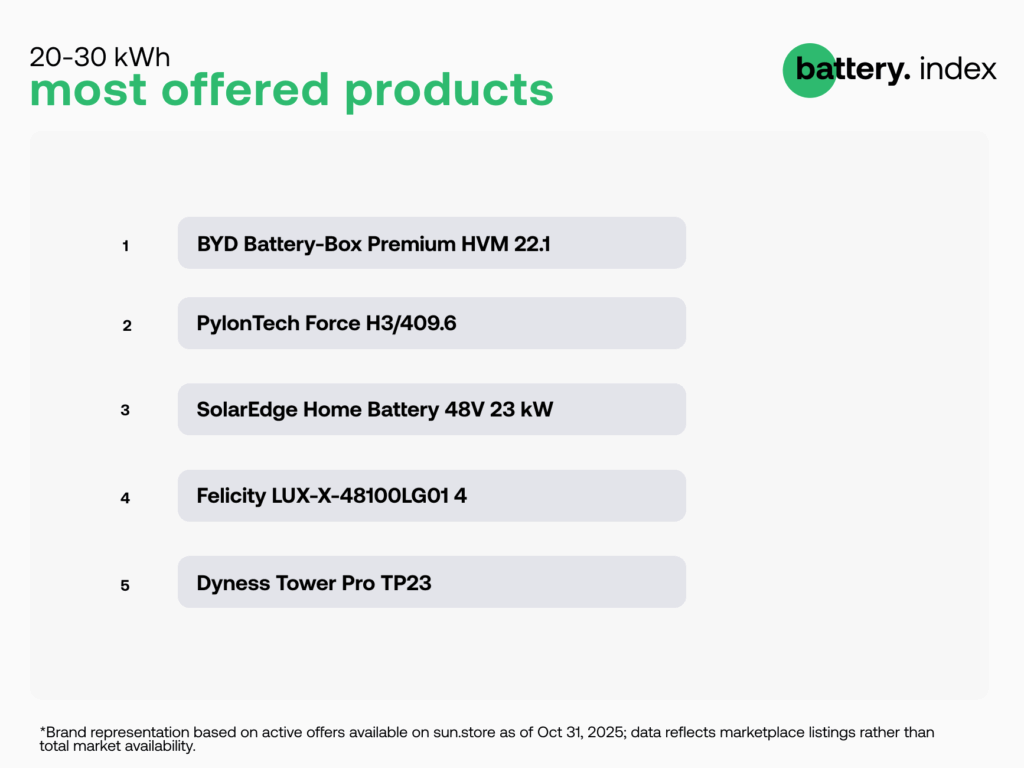
60–120 kWh segment
- Deye GE-F60
- Solax AELIO-P60B100
- KSTAR KAC50DP-BC100DE
- Solax AELIO-P50B100
- Deye BOS-G80 Pro
- Deye BOS-G60 Pro
The upper commercial range remains dominated by Deye, with multiple models leading sales volumes. SolaX continues to strengthen its foothold, securing two positions in the Top 5, while KSTAR retains visibility thanks to robust demand in the 60–80 kWh category.
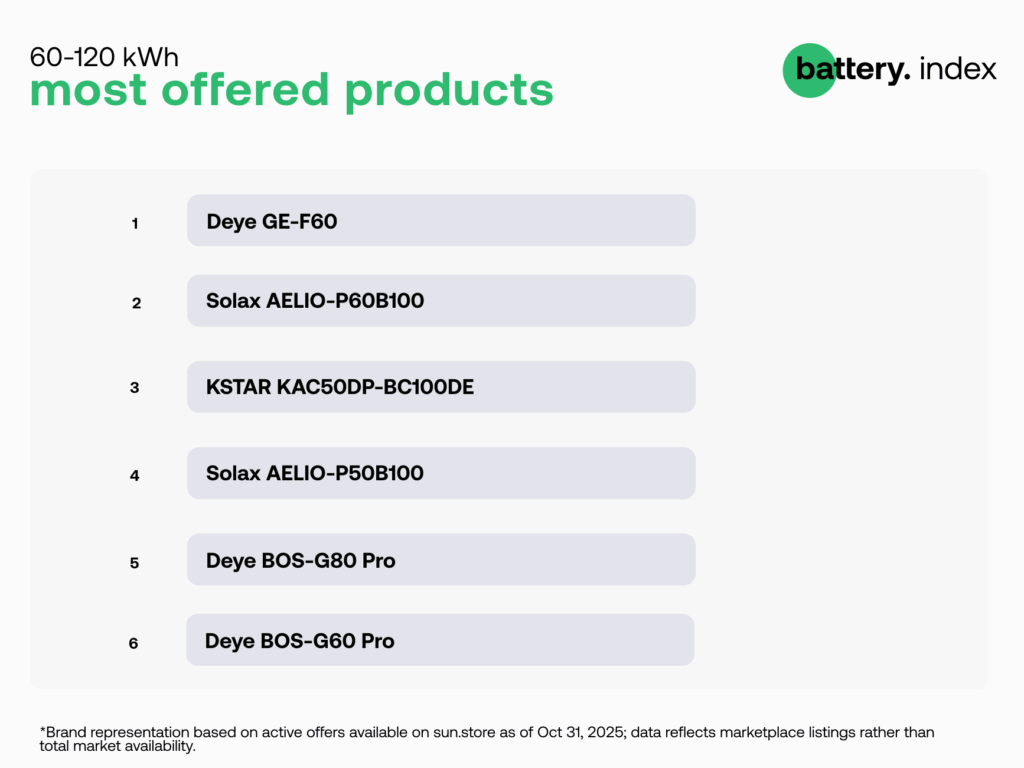
 EN
EN ES
ES DE
DE PL
PL IT
IT FR
FR GR
GR